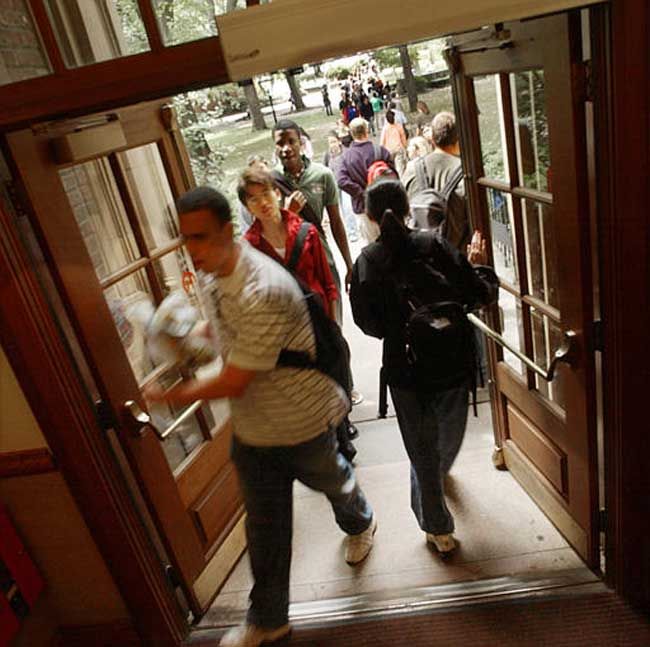Environmentally Friendly Back-to-School Tips

As kids and parents make back-to-school lists, they might want to get educated on some environmentally friendly ways to prepare for fall classes.
Here are 10 tips the World Wildlife Fund offers to help keep backpacks green:
1) See if there are things, such as pencils and pens, left over from last year that can be used this fall.
2) Look for school supplies—folders, notebooks, staples—made of recycled materials. Using recycled products helps save landfill space and cut pollution. The EPA has found that recycling reduces water pollution by one-third and air pollution by 75 percent.
3) Try finding back-to-school deals on the Web. Ordering school supplies online or by phone saves you a trip to the store as well as the fuel needed to drive from store to store.
4) Look for the FSC label on pencils and paper. Many paper products are made from trees specifically grown and harvested for papermaking, thus sparing delicate rainforest ecosystems. The Forest Stewardship Council certifies that wood and paper products are grown and managed responsibly.
5) Purchase supplies with minimal packaging. Packaging makes up about a third of the garbage that piles up in landfills. Also, less processing and packaging means less energy goes into production, and less global warming pollution is created.
Sign up for the Live Science daily newsletter now
Get the world’s most fascinating discoveries delivered straight to your inbox.
6) Brown bag meals and avoid plastic. Pack school lunches in brown, unbleached, recycled paper bags whenever possible. And if your child has a favorite superhero, there's a good chance the character is printed on a re-usable lunchbox.
7) Prepare lunches using local produce. Be aware of the distances food travels and the emissions necessary to ship and truck it there. Although broccoli is grown at nearby farms, the ones that shoppers pick up at the supermarket traverse an average distance of 1,800 miles.
8) Refill water bottles. Don't throw them away. One and a half million tons of plastic are used to bottle water every year. Such large-scale manufacturing and disposal of water bottles can release toxic chemicals into the environment.
9) Look for laptops made by companies working to reduce their global emissions. The ENERGY STAR sticker is a good tip-off that a product is compliant with EPA guidelines. Some backpacks even have built-in solar panels to provide an eco-friendly way to power laptops. Also, turn off your computer and monitor when not in use.
10) Walk or bike to school, not only to get exercise but also to benefit the environment. By burning calories walking, you and your child don’t burn a vehicle's gasoline and thus do your part to help reduce global warming. Surely, the PE instructor will approve.
- VIDEO: An Earth Day Message
- 10 Ways You Can Improve Earth's Health
- 10 Way to Green Your Home












